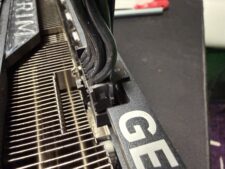Raspberry Pi Powers Friendly Companion Robot
The Raspberry Pi community is huge and a great place to make friends—literally. Today we’re showing off one of the coolest friends you can make with the help of our favorite SBC. This bipedal companion robot was created by maker and developer Dan Nicholson and relies on a Raspberry Pi as it’s main driving component. It’s also aided by a couple of custom PCBs as well as an Arduino.
According to Nicholson, the goal of this project wasn’t just to make a cool bipedal robot but also to develop something that others could experiment with at home. Whether you’re new to robotics or a well-seasoned pro, this project was intended to be a platform for makers of any ability to explore and build upon. It’s intentionally modular and can work with a variety of systems, components.
This is the third iteration of his work which has been progressing over a few years. The first was mostly just a proof of concept while the second was a more impressive albeit less stable edition. You can see how far along this third version has come by checking out the playlist on YouTube he shared detailing version 2’s creation.
There are quite a few pieces in this robot created from scratch just for the project. You can find two custom PCBs—one for the Pi 3B+ and one for the Arduino Pro Mini that controls the servos. The body is also 3D printed with files available for anyone to download and print at home. A Google Coral TPU is attached to the head to enhance the Pi’s image processing capability. Additional components include things like a camera module, microphones, buttons, a microwave sensor and even a snazzy NeoPixel LED ring for one of the eyes.

The software for the project is also open source and available for anyone to check out. There is a full build guide over at GitHub which includes detailed information for specific parts of the project like setting up speech recognition and implementing a battery monitor for power management.
If you want to get a closer look at this Raspberry Pi project, check out the video shared to YouTube showing it off and explore the project in greater detail over at GitHub. Be sure to follow Dan Nicholson for future updates, as well.













